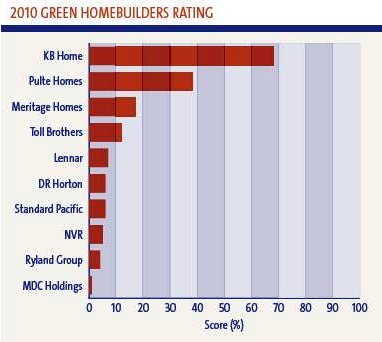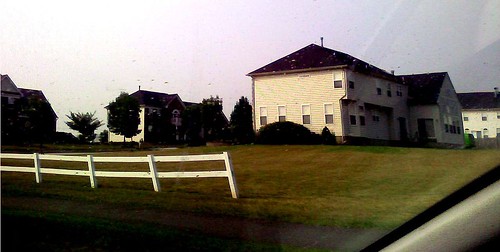Calvert Investments: Production homebuilders don't bother much with smart growth

Posted January 26, 2011 at 1:29PM
And, in other news, it’s cold on the east coast in January. Still, it’s useful to have some analysis on the point.
Calvert Investments is one of the country’s most longstanding SRI (socially responsible investment) mutual fund managers. The company, which manages over $14 billion in assets, says it evaluates potential investments on “a rigorous review of financial performance plus a thorough assessment of environmental, social, and governance performance.” As part of this mission, it sought to discover how the practices and policies of major US homebuilders compare with respect to the environment and resource efficiency.
The result is a recent report, A Green Recovery for America’s Homebuilders? The good news from the report is that more companies are paying more attention to green concerns than ever. The bad news is that all of the ten large companies evaluated score very poorly on land use:
After noting the environmental benefits of smart growth, the report notes:
“Overall, major homebuilders are not taking progressive steps with regard to land use. The industry scored an average of 6% in our analysis using land use and conservation metrics, and what information is disclosed is very limited.
“With regard to sustainable land use, Standard Pacific, KB Home, Toll Brothers, and Pulte Homes currently have commitments aimed at increasing infill development. From all companies in the industry, we are seeking greater information about these policies, their implementation, and overall penetration of infill development.”
The review considered whether each company had policies and programs covering land conversion, and smart growth and urban infill development, while avoiding wetlands and other sensitive habitats.
The category was one of five surveyed by Calvert. The other four were building materials, energy, water, and climate change. KB Home and Pulte scored the best overall:

The report says that, if those two companies were taken out of the mix, the rest of the companies analyzed would score only 6 percent on the overall scale. That’s pathetic no matter how you phrase it.
Energy efficiency is the area in which Calvert found the most progress, but even by that criterion only two companies scored better than 50 percent.
After interviewing the report’s authors, Philip Langdon published a blog post on the New Urban Network:
“While builders are doing an increasingly good job of reducing energy waste in houses, they largely ignore the impact of the locations, density, and street networks of those dwellings. The national builders frequently build in collector-and-cul-de-sac pods, which make it hard for residents to walk to services and which lengthen each car trip.
“The big companies often build at densities too low to support efficient bus or other mass transit — this despite the fact that the transportation sector is America’s second-largest generator of greenhouse gases (behind electrical generating plants). In addition, the builders often choose to develop in locations that are not close to jobs and regional centers.”
Langdon does compliment the KB Home Sustainability Report, published on the company’s website. The report, he says, “runs 38 pages, packed with data on KB Home’s policies and programs and their progress year by year.”
Disclosure: NRDC’s executive director is on an advisory panel for KB Home. He was not consulted with regard to the writing of this post.
Move your cursor over the images for credit information.

